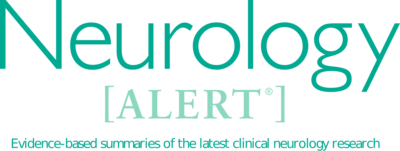
Neurology Alert – September 2, 2010
September 2, 2010
View Issues
-
10 Lifestyle, Medical Interventions Can Yield 90% Stroke Risk Reduction: So Why Is Stroke Still So Common?
Ten risk factors are associated with approximately 90% of ischemic and hemorrhagic strokes. Hypertension, smoking, abdominal obesity, physical inactivity, and diet are the most important modifiable risk factors for stroke. -
Predicting the Outcome and Prognosis of Acute Myelitis
In a cohort of patients presenting with acute myelitis, motor onset and a subsequent relapse were the strongest predictors of residual disability. An abnormal baseline brain MRI was the strongest predictor for conversion to multiple sclerosis. -
Obstructive Sleep Apnea, Stroke Risk Due to Impaired Cerebral Autoregulation
Obstructive sleep apnea causes a variety of alterations in the control of cerebral blood flow, contributing to the risk for stroke. -
Corneal Confocal Microscopy and Neuropathy
Confocal microscopy of the cornea may be a useful diagnostic test to identify patients with small-fiber neuropathies. -
Triptans and Serotonergic Medications in Migraine Patients: Should We Worry?
Concern about serotonin syndrome should not prevent migraineurs who have mood disorders from being treated judiciously with the combination of triptans and serotonergic medications. -
Stroke Alert: A Review of Current Clinical Stroke Literature
A great debate continues regarding appropriate management of hypertension during acute stroke. In the U.S., permissive hypertension is popular with recommendations that antihypertensive medications be discontinued when an acute ischemic stroke occurs. -
Clinical Briefs in Primary Care Supplement
-
Pharmacology Watch
Lorcaserin submitted for FDA review, FDA advisory panel votes against phentermine/topiramate, mixed vote on rosiglitazone, advisory panel votes to remove breast cancer indication from bevacizumab labeling, no increase in seizures found with DTaP vaccine, new REMS for quinine.
